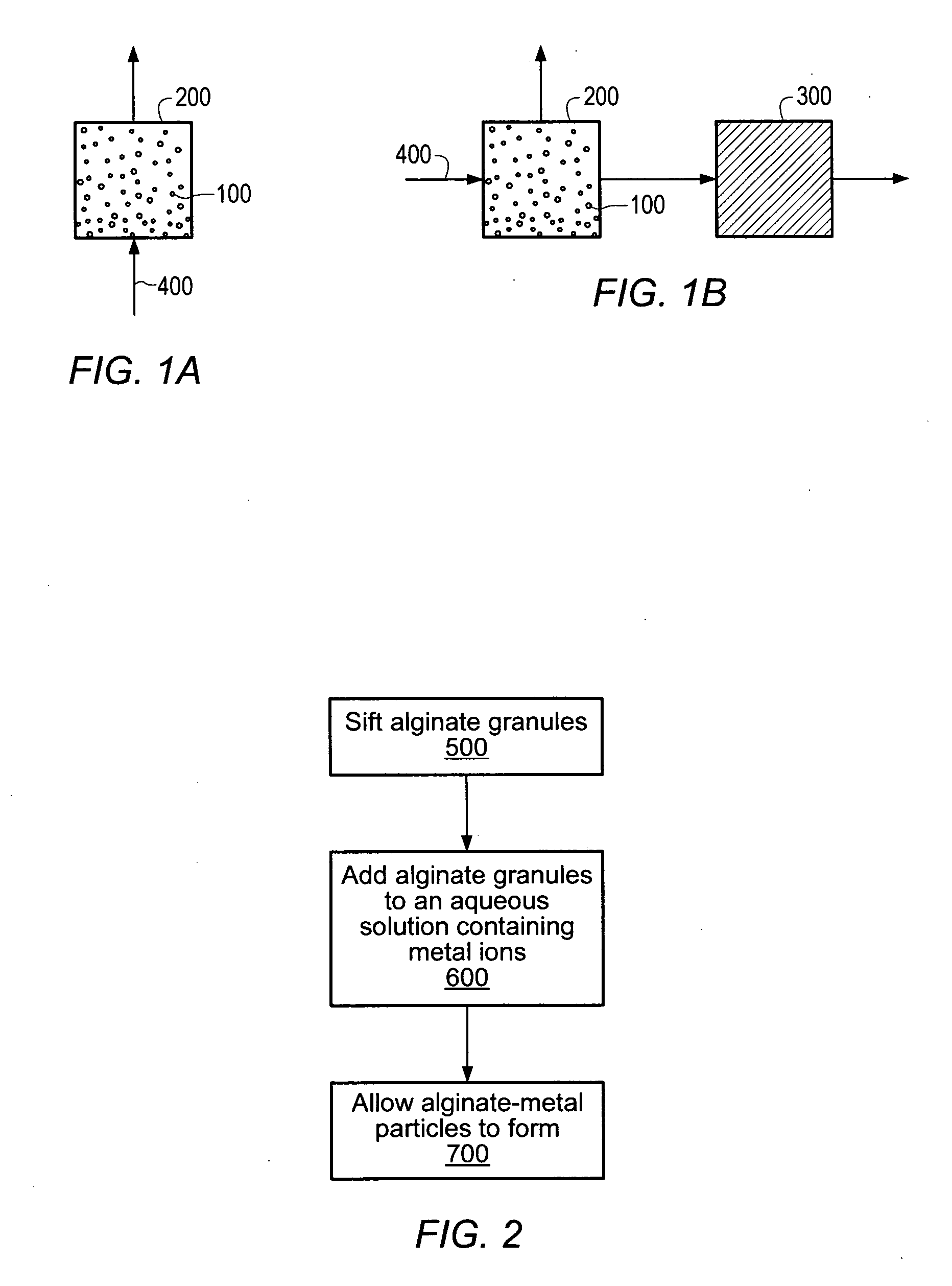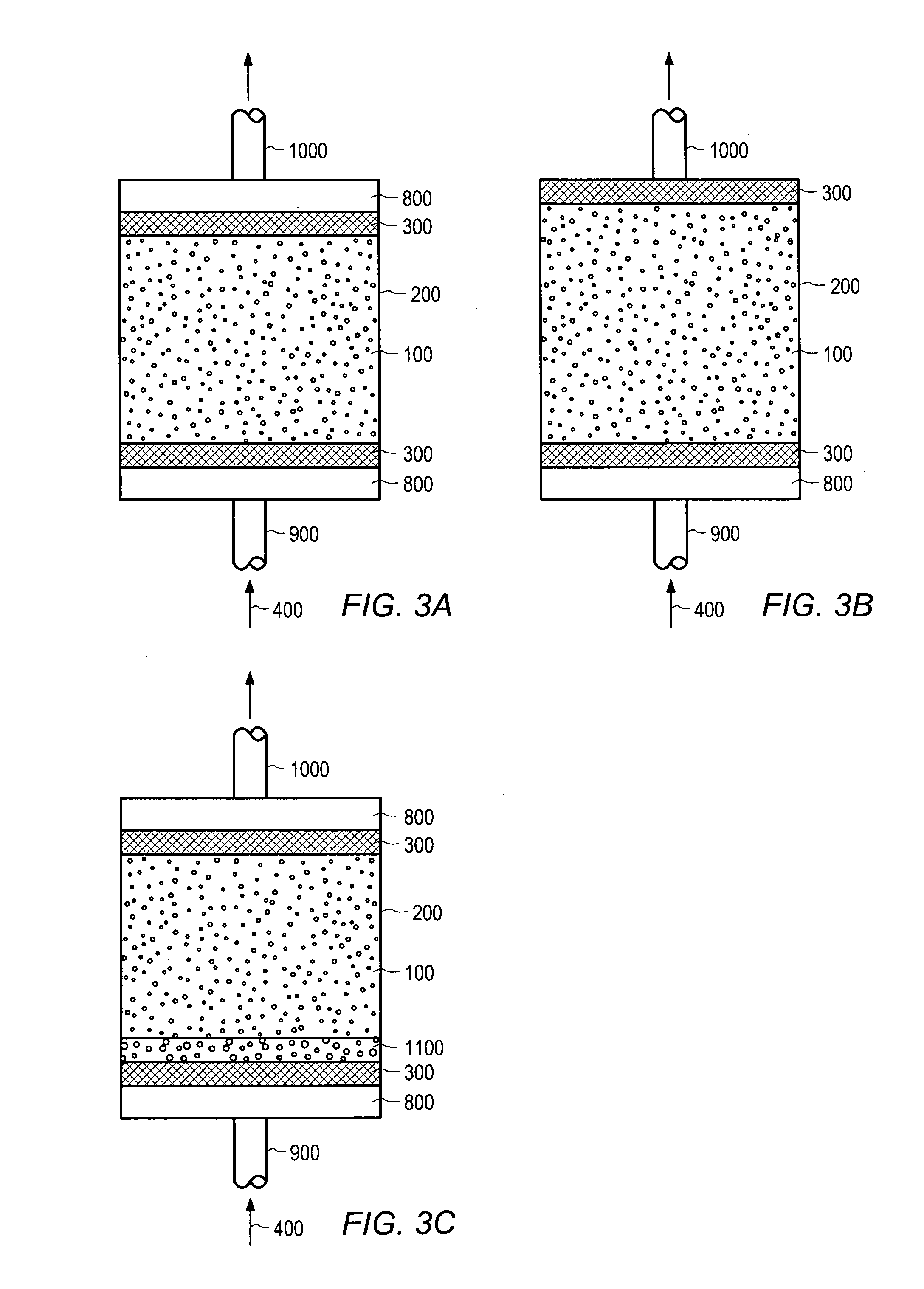Systems and methods of reducing metal compounds from fluids using alginate beads
a technology of metal compounds and beads, applied in the field of fluid removal systems and methods, can solve the problems of bacteria not being able to survive in the acidic solution of many metals, heavy metal concentration in bacteria will eventually reach a toxic level to the bacteria, and foul wastewater treatment systems
- Summary
- Abstract
- Description
- Claims
- Application Information
AI Technical Summary
Benefits of technology
Problems solved by technology
Method used
Image
Examples
example 1
[0083] Sodium alginate granules were sifted through a #20 ASTM sieve. The sodium alginate granules that passed through the #20 ASTM sieve were then sifted through a #25 ASTM sieve. An aqueous solution containing 2 wt % available calcium was prepared from water and calcium chloride. Sifted sodium alginate granules (5 g) were added to an aqueous solution (100 ml) containing calcium ions. The aqueous solution was stirred for 5-10 minutes and alginate particles formed. The aqueous solution was filtered through no. 40 filter paper (8 μm pore diameter). The alginate particles retained on the filter paper were dried at 30° C. for 24 hours.
[0084] A housing designed to retain the alginate particles was prepared. Sodium alginate particles were placed in the prepared housing and feed streams containing metal ions were processed through the housing. FIG. 10 depicts the concentration of metal ions in the effluent. As shown in FIG. 10, the alginate particles significantly reduced the amount of c...
example 2
[0085] Sodium alginate granules were sifted through a #20 ASTM sieve. The sodium alginate granules that passed through the #20 ASTM sieve were then sifted through a #25 ASTM sieve. An aqueous solution containing 2 wt % available calcium was prepared from water and calcium chloride. Sifted sodium alginate granules (6 g) were added to an aqueous solution (100 ml) containing calcium ions. The aqueous solution was stirred for 5-10 minutes and alginate particles formed. The aqueous solution was filtered through no. 40 filter paper (8 μm pore diameter). The alginate particles retained on the filter paper were dried at 30° C. for 24 hours.
[0086] A housing designed to retain the alginate particles was prepared. Sodium alginate particles were placed in the prepared housing and feed streams containing metal ions were processed through the housing. FIG. 11 depicts the concentration of metal ions in the effluent. As shown in FIG. 11, the alginate particles significantly reduced the amount of c...
example 3
[0087] Sodium alginate granules were sifted through a #20 ASTM sieve. The sodium alginate granules that passed through the #20 ASTM sieve were then sifted through a #25 ASTM sieve. An aqueous solution containing 2 wt % available calcium was prepared from water and calcium chloride. Sifted sodium alginate granules (10 g) were added to an aqueous solution (100 ml) containing calcium ions. The aqueous solution was stirred for 5-10 minutes and alginate particles formed. The aqueous solution was filtered through no.40 filter paper (8 μm pore diameter). The alginate particles retained on the filter paper were dried at 30° C. for 24 hours.
[0088] A housing designed to retain the alginate particles was prepared. Sodium alginate particles were placed in the prepared housing and feed streams containing metal ions were processed through the housing. FIG. 12 depicts the concentration of metal ions in the effluent. As shown in FIG. 12, the alginate particles significantly reduced the amount of c...
PUM
| Property | Measurement | Unit |
|---|---|---|
| Width | aaaaa | aaaaa |
| Width | aaaaa | aaaaa |
Abstract
Description
Claims
Application Information
 Login to View More
Login to View More - R&D
- Intellectual Property
- Life Sciences
- Materials
- Tech Scout
- Unparalleled Data Quality
- Higher Quality Content
- 60% Fewer Hallucinations
Browse by: Latest US Patents, China's latest patents, Technical Efficacy Thesaurus, Application Domain, Technology Topic, Popular Technical Reports.
© 2025 PatSnap. All rights reserved.Legal|Privacy policy|Modern Slavery Act Transparency Statement|Sitemap|About US| Contact US: help@patsnap.com



